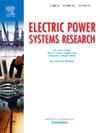Impact of cellulose contamination and flow velocity on dielectric properties of synthetic ester-based nanofluid
IF 4.2
3区 工程技术
Q2 ENGINEERING, ELECTRICAL & ELECTRONIC
引用次数: 0
Abstract
This study proposed a novel investigation into the combined effects of fluid circulation velocity and cellulose particle contamination on the dielectric performance of insulating oils, a relationship that has been infrequently explored. A direct comparative analysis was conducted between pure synthetic esters and ester-based nanofluids (with 0.01 % TiO₂ nanoparticles). Dielectric characteristics were rigorously assessed using partial discharge (PD) tests and breakdown voltage (BDV) measurements under controlled conditions. Specifically, these tests were performed while systematically varying both the fluid circulation speed and the concentration of introduced cellulose contaminants, allowing for a direct comparison of their influence on both the pure ester and nanofluid. The experimental results clearly demonstrate the detrimental impact of cellulose particles on the dielectric strength. Conversely, increasing the fluid circulation speed consistently improved the dielectric performance, as evidenced by the higher PDIV and BDV values and lower discharge intensity across both fluid types. Furthermore, the ester-based nanofluid consistently exhibited superior dielectric properties compared to the pure ester under all tested conditions, suggesting the beneficial role of TiO₂ nanoparticles in mitigating the negative effects of cellulose contamination and enhancing the overall dielectric performance.
纤维素污染和流速对合成酯基纳米流体介电性能的影响
本研究提出了流体循环速度和纤维素颗粒污染对绝缘油介电性能的综合影响的新研究,这种关系很少被探索。对纯合成酯和酯基纳米流体(含0.01% tio2纳米颗粒)进行了直接比较分析。在受控条件下,通过局部放电(PD)测试和击穿电压(BDV)测量严格评估介电特性。具体来说,这些测试是在系统地改变流体循环速度和引入纤维素污染物浓度的情况下进行的,从而可以直接比较它们对纯酯和纳米流体的影响。实验结果清楚地证明了纤维素颗粒对介质强度的不利影响。相反,增加流体循环速度可以持续改善介质性能,这可以从两种流体类型中更高的PDIV和BDV值以及更低的放电强度中得到证明。此外,在所有测试条件下,与纯酯相比,酯基纳米流体始终表现出优越的介电性能,这表明tio2纳米颗粒在减轻纤维素污染的负面影响和提高整体介电性能方面具有有益作用。
本文章由计算机程序翻译,如有差异,请以英文原文为准。
求助全文
约1分钟内获得全文
求助全文
来源期刊

Electric Power Systems Research
工程技术-工程:电子与电气
CiteScore
7.50
自引率
17.90%
发文量
963
审稿时长
3.8 months
期刊介绍:
Electric Power Systems Research is an international medium for the publication of original papers concerned with the generation, transmission, distribution and utilization of electrical energy. The journal aims at presenting important results of work in this field, whether in the form of applied research, development of new procedures or components, orginal application of existing knowledge or new designapproaches. The scope of Electric Power Systems Research is broad, encompassing all aspects of electric power systems. The following list of topics is not intended to be exhaustive, but rather to indicate topics that fall within the journal purview.
• Generation techniques ranging from advances in conventional electromechanical methods, through nuclear power generation, to renewable energy generation.
• Transmission, spanning the broad area from UHV (ac and dc) to network operation and protection, line routing and design.
• Substation work: equipment design, protection and control systems.
• Distribution techniques, equipment development, and smart grids.
• The utilization area from energy efficiency to distributed load levelling techniques.
• Systems studies including control techniques, planning, optimization methods, stability, security assessment and insulation coordination.
 求助内容:
求助内容: 应助结果提醒方式:
应助结果提醒方式:


